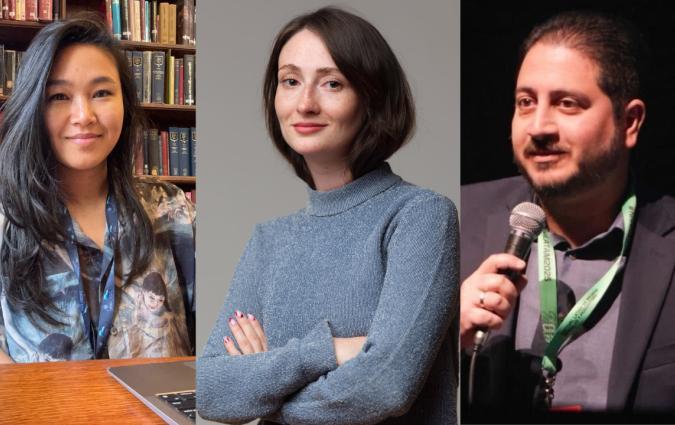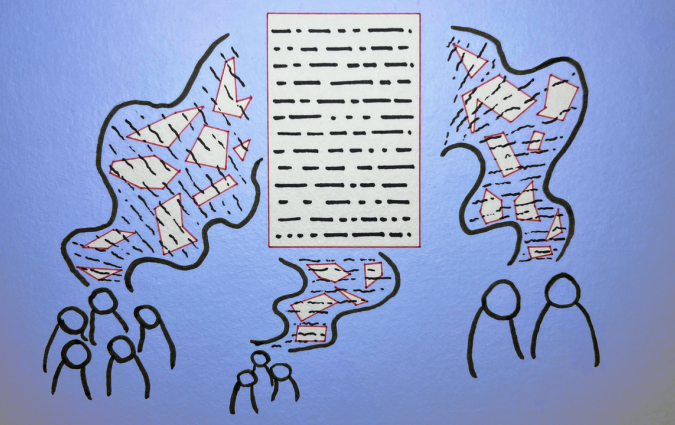How Insider engaged its audience through LinkedIn’s new audio events

Pavan Mahal.
This interview was first published by Italian journalist Francesco Zaffarano in his biweekly Substack newsletter, Mapping journalism on social platforms. The original is available at this link. Sign up for the newsletter here.
In March, LinkedIn released a new live audio events feature for company pages. The feature was created following the release of a series of similar functions on other social media platforms, like Twitter Spaces, Facebook Audio Rooms, and Reddit Talks, as well as the popularity of the social audio app Clubhouse. These features have seen varying levels of success, with the last two examples, at Facebook and Reddit, having already been discontinued. The beta test for LinkedIn Audio Events lasted one year, and Insider was one of the news brands involved.
For this issue, I spoke with Pavan Mahal, a London-based audience editor at Insider, where she works on implementing social media strategy with her primary focus on LinkedIn. She is one of two editors who worked on audio events for Insider this past year.
Q. Why did you start working with audio events on LinkedIn?
A. LinkedIn reached out to us last year, saying they wanted some publishers to test an audio-based feature. We had done LinkedIn live video events before, but those were bigger, special projects rather than day-to-day stuff.
LinkedIn pushed us to try this more, and it increasingly became quite big for us on the platform. We are building more and more of an audience each time, which is encouraging.
Q. What kind of audio events are you organising?
A. We have a good understanding of what will work for our LinkedIn audience, mainly topics across business, finance, tech, retail, and workplace culture.
For example, we did one when there was all that discourse around quiet quitting, which was huge on LinkedIn. We tried to find the unique angle that we had. One of our reporters had filed a great story on why people of colour are not necessarily able to quiet quit, and she had a live conversation with a career expert on that.
Other than workplace culture, the whole discourse around AI and ChatGPT has really taken off with our readers. So we did one audio event around “Will AI steal my job?” and that's been our best event in terms of attendees yet – over 900 people joined live, and we received a lot of questions during the event.
Q. And how are you structuring these events?
A. We've been thinking about it as we did with the work we've done with Twitter Spaces because they are very similar. We usually do one audio event if we notice a story taking off on our site or through LinkedIn.
When we find a good story, we message the reporter who has worked on it, and we pitch the idea for the audio event, which is usually a 30-minute chat with another reporter or an expert. The reporters have often spoken with some experts to write the article, and those experts are happy to come back for a live chat.
Sometimes we've asked people to send questions through the comments ahead of the event, and sometimes we've taken live questions, so we invited listeners to join on stage and ask their questions live.
Q. How do you manage it when you bring people on stage from the audience? Aren’t you scared that something could go wrong?
A. We hesitated to do that but have done it a few times. It’s a bit different from Twitter Spaces, where you have random accounts requesting to speak, and you don’t know who they are. Since LinkedIn is so much about people, it feels easier to spot fake accounts.
Q. Is there any difference between Twitter Spaces and LinkedIn audio events?
A. They are very similar and easy to set up and manage. LinkedIn audio events, though, have a very cool feature, a sort of pre-live room that you can open to add speakers so that everyone’s there when the event starts. So you don’t have those awkward minutes when people are trying to tune in, and nothing happens, like on Twitter Spaces.
A downside is that LinkedIn doesn’t allow you to record audio events. So people cannot listen to it after the event.
Q. So there is no way you can repurpose that content?
A. We tried once. We manually recorded the live chat and then used some sound bites to create a carousel on LinkedIn. The LinkedIn News team also featured it in one of their news roundups. For now, we might lean into this more to retain the audience we’ve built up around the events.
We also check the comments below the event after the live because people tend to comment a lot there. We share the link to the story in the comments, hoping that people will read the article.
Q. Do you have a set frequency for these events?
A. We're still familiarizing ourselves with the tool and trying to get more frequent with it, but at the same time, you don't want to do it for the sake of doing it. It makes more sense to do an event to capture a moment that's taking off on LinkedIn. So, it's more about being in the moment rather than developing a frequency.
Q. How many people are involved on the production side?
A. It's me and Victoria Gracie, an audience editor based in the US. Production is not complicated – once we've set up the event link, we'll just start the audio event at a given time, and the reporters will just take it away. We also keep a Slack chat open if the reporters have any questions during the event.
Q. How many average listeners do you have?
A. I feel it’s too early to say since we've been trying and testing, but our listeners have ranged between at least 200, and 900.
Q. Of those who register for the event, how many people tune in?
A. This is particularly tricky because it’s unclear how notifications work for these audio events. When we publish the event, you see people entering and registering for it, but there are not many. Then, I think LinkedIn sends a notification to your followers before the event starts because we usually see the number of attendees going up right before the event. I think people are also finding it while the event is running because attendees may share the event on their accounts. So it’s very tricky to monitor that data.
Q. How did audio events impact the overall performance of your LinkedIn page?
A. It's been mainly an engagement booster, especially comments, more than anything else. I haven’t noticed much change in terms of our page growth.
Q. How does audio link back to your company strategy?
A. On the company level, we are very conscious about bringing fascinating angles to stories in the news. The audio events are capitalizing on that and helping us share fascinating angles with our audience.
On the social media team level, instead, we always try to think about the most dynamic ways to tell those stories and elevate the profiles of the reporters who covered those stories. Audio events help with that, and it's an excellent way for people to interact with the reporters and the stories we own directly. It can also help us come up with new story ideas on the topics discussed that we can share with the newsroom for further reporting.
Q. What is the main thing you learned since the beginning of this project?
A. When you're working with a platform and are testing a new feature, it’s good to share feedback with your partners at the platform. I realized this is something they embrace. We've got a great relationship with LinkedIn, and they are always very receptive to our feedback because they want to understand how a publisher would use the features we test.
We had various conversations with them – also because we tested other features like carousels and newsletters – and it means that, in the long run, those products will be better when they roll out.
Q. Can you tell me about some news publishers doing well with audio on social platforms?
A. The Telegraph has really owned Twitter Spaces, and it’s so great to see journalists across their newsroom actively involving themselves in social-first coverage like this.
Through news around Ukraine and also news from further back, like Partygate [in the UK], they really understand this idea of being in the moment and contributing to wider conversations taking off on the platform.
Separately, I’ve loved seeing what Bloomberg does with their Spaces! I’ve also seen instances with their Spaces on some of their accounts where these conversations have led to further reporting around a topic.
Also, the Insider newsroom has enjoyed using Reddit's live audio features in the last year. We've done a monthly movie chat with the moderators of r/movies and one of our entertainment reporters and a bi-monthly chat in r/relationships with another reporter who focuses on love and relationships.
Italian journalist Francesco Zaffarano has recently launched a biweekly Substack newsletter, Mapping journalism on social platforms, featuring interviews with people leading news innovation on social media. We lightly edited this interview for brevity and clarity. The original is available at this link. Sign up for the newsletter here.
In every email we send you'll find original reporting, evidence-based insights, online seminars and readings curated from 100s of sources - all in 5 minutes.
- Twice a week
- More than 20,000 people receive it
- Unsubscribe any time






